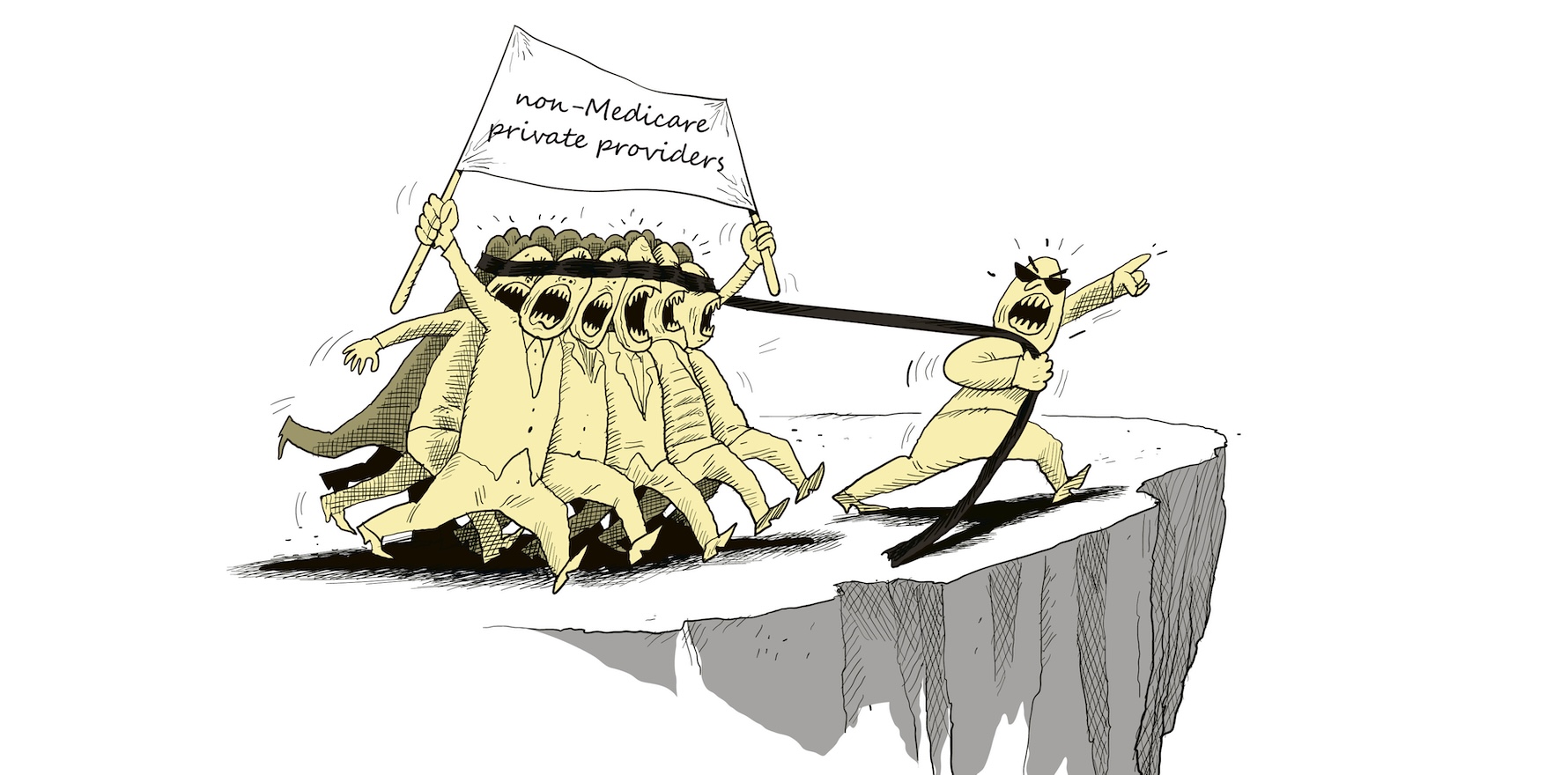If you’re going to insist that everyone inside Medicare shares their data meaningfully, it can only be a matter of time before the government applies the same sharing mandate to the rapidly expanding private provider ecosystem.
If you’re following the trajectory of the Department of Health, Disability and Ageing’s “sharing by default” program – whereby the government is co-ordinating a transformation of our health system technology base so all providers are able to share meaningful data in near real time – you might be surprised at just how fast things are moving, so far without the need for a lot of heavy-handed legislation, which is what occurred in the US to get software vendors to change.
A big part of the early success of the push might be put down to a wildly enthusiastic and collegiate program from the CSIRO called Sparked, which has been very busy co-ordinating everyone from clinicians to policy makers to software vendors, with a goal of standardising clinical coding around the key sharing resource FHIR.
For some reason – it’s something around timing, culture and a uniquely co-ordinated collaborative approach from the Sparked team – Sparked has managed the “herding cats” problem to the point where we are near a key starting point for sharing, of having a usable common clinical coding protocol that is synchronised with the cloud-sharing resource FHIR.
It’s a baseline for being able to share data meaningfully between healthcare providers which every software vendor and system developer can use.
On a day long virtual get-together of Sparked aficionados just over a week ago we witnessed something quite extraordinary in terms of progress towards a system that might actually share by default one day: nearly every ehealth CEO of each state lined up to discuss their view of and involvement in the Sparked initiative, and, give or take, there was amazing buy-in and alignment.
Sparked is a federally funded initiative. Having the states buy into the overall digital roadmap via this program is a fundamental base step to being able to get the whole system to line up and share data between providers and geographies as needed. And all the states were in.
Given the amount of alignment and enthusiasm, you’d swear we might even be witnessing just a bit of FOMO in the dynamic of how people are starting to join in.
No matter how it’s happening, it is happening, which can only be a good thing, although the program of work in terms of actual system infrastructure build and relevantly aligned legislation to support the whole program is huge and hasn’t really started in earnest yet.
In terms of infrastructure, we’re looking at a universal national provider directory to know where everyone is at any one time and how to get to them, a rearchitected My Health Record which can actually share relevant atomised information in real-time via FHIR, a national HIE, and probably a massively upgraded myHealth app for patients, just to name a few.
In terms of legislation, we need something to sort out identity, then consent and privacy, cybersecurity, and probably, eventually, something that will actually mandate FHIR and other aligned technology and standards so everyone has to sing from the same hymn sheet in terms of data sharing.
So, a long way to go, but definitely a plan, a good one, with a pretty good start on things, including, vitally, buy-in from the states and federal state collaboration.
Anything missing?
Related
Well, yes, actually … something pretty big and expanding; something that is rapidly growing outside of the Medicare ecosystem which looks like it’s going to be a lot bigger part of the overall healthcare delivery picture than anyone imagined in the past: the non-Medicare private provider ecosystem.
Stuff like:
- The rapidly growing provision of community care services that the private health insurers are starting to build out, including a mass of mental health services but now more traditional care provision such as general practice;
- All the big private virtual care platforms, from Instant Scripts of Wesfarmers to Pilot and Juniper of Eucalyptus, and of course, the increasingly notorious virtually integrated cannabis providers;
- All the emerging private services that provide care services into aged care and disability.
And more.
That’s a very big and fast-growing chunk of our healthcare economy that until now the government is flying pretty blind on.
Times are changing rapidly.
There was a day when Medicare captured most of the relevant provider transactions that the government needed to know about. Not now though, and the government is fully aware of what is going on.
Do these private providers really think that the government is going to do all this work on data sharing, technology standardisation, Sparked, FHIR and the like, and not push the non-Medicare economy into their purview, so they can start properly understanding what is going on, plan for it, and connect it far more effectively with the core Medicare economy?
Witness the government’s very clear intent on sharing-by-default with the big private pathology companies.
Very much against their commercial will these groups have been dragged kicking and screaming into the world of “sharing by default”, initially via words and declarations of intent, and finally via the first bit of “sharing by default” legislation, the Modernising My Health Record, Sharing by Default Bill 2024.
Yep, there’s more where this came from, everyone. We have a pretty determined government with a plan and now a long runway – we assume at least six years – to pull it off.
The big pathology companies, of course, are private. All the software vendors who build EHRs, integrations and virtual technology for the system are private.
The government has them all firmly notified that they are going to need to be part of the program, but so far this is because all of these private groups make up an integral part of the Medicare ecosystem.
Again, do all the providers working on the outside of Medicare think the government will continue to overlook them, especially given how some of them are scaling and growing so fast outside of Medicare?
No, they almost certainly won’t, is the answer.
Which means all these private providers need to start thinking a lot more carefully about what is going on with the other providers in terms of government technology and data-sharing requirements, in terms of supply of data live to key elements of the system such as the My Health Record (and likely connection to the national HIE) and, in terms of privacy and consent.
A telling sign here for all these private non-Medicare providers is that you see hardly any of them at a Sparked gathering.
Which either means they think they can ignore what is going on because they aren’t going to be captured into the “sharing by default” paradigm, or they aren’t yet really aware of what is going on and what is coming at them.
If you can imagine the CTO and CEO of one of our major GP PMS systems or one of the big private pathology companies reading this, you might imagine them now with a wry smile on their faces.
Meeting government requirements for data sharing, governance and transfer even before you throw in the massive demands of “sharing by default” – most vendors will have to entirely rearchitect their platforms for the cloud or build complex middle wear to talk to it. And that’s neither cheap or simple. Quite the opposite.
A lot of the private providers have contented themselves building bespoke technology and a lot of that technology simply will not cut it in terms of the requirements of sharing by default.
If they haven’t talked to the government already and understood the intent to make “sharing by default” apply to the whole system, not just Medicare, they all should, and quick smart.
The time is almost certainly coming when the government turns to them and starts applying all the stuff they’ve learnt and are applying to the Medicare-based vendors and providers.
And if they are starting cold, they are going to have some significantly disrupted, or even bankrupted business models.





